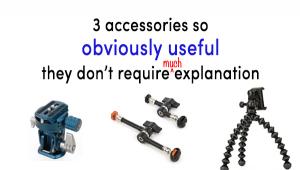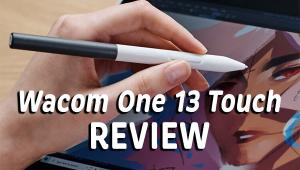Storm Danger! 7 Things You Need to Quash Electrical Storms

A spring shower can interrupt power. A lightning strike can fry your electronics with 300 million volts. And a sudden, severe drop in voltage can burn an electric motor crisper than a bug in a hot skillet. These very real potential disasters can cost you money, time and possibly your precious digital images. Here’s a list of seven devices that might save your bacon.
Scare tactics? Damn straight! The National Lightning Safety Institute estimates that one out of every 200 houses will be struck per year. That means in a little town with 20,000 houses, as many as 100 homeowners might get the hotfoot within the next 12 months. Unprotected they could lose a TV—or worse. Ouch.
 If you have professionally installed lighting rods, move to the head of the class. Don’t skip this story though, because you’re still not out of the woods. Lighting arrestors do not prevent lighting from striking. Properly installed they are intended to prevent damage by mitigating the danger. With or without lighting rods, in addition to the obvious things like your computer, make sure that your water heater, water meter, gas piping, security alarm and communications system are thoroughly protected from lighting damage.
If you have professionally installed lighting rods, move to the head of the class. Don’t skip this story though, because you’re still not out of the woods. Lighting arrestors do not prevent lighting from striking. Properly installed they are intended to prevent damage by mitigating the danger. With or without lighting rods, in addition to the obvious things like your computer, make sure that your water heater, water meter, gas piping, security alarm and communications system are thoroughly protected from lighting damage.
Notice: Any lightning protection system should follow the national safety standards and requirements of the Lightning Protection Institute, National Fire Protection Association, and Underwriters Laboratories. I am not an electrician and I am not giving advice—I’m just a voice of warning.
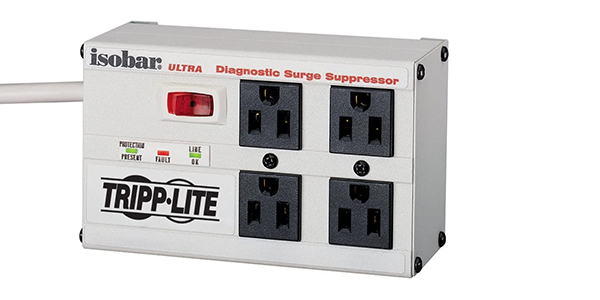
1. Surge Suppressor
Step number one, every house, apartment and igloo needs a surge suppressor, probably more than one. For a more complete explanation of how surge protectors work, please check my story from 2019: “7 Dangerous Misunderstandings About Surge Suppressors that Photographers NEED to Know.” If you do not already have a SPD (Surge Protection Device) unplug your computer, TV and other sensitive electronics as soon as you hear thunder.
For stationary home use, say hello to the Tripp Lite Ultra Isobar 4-outlet surge protector. I have been using one form or another of this iconic Tripp Lite Isobar SPD since 1984, and I am still a huge fan.

Housed in fire resistant metal, the Tripp Lite Ultra Isobar 4 provides 3330-joule surge protection rating (the higher the better) and EMI/RFI noise filtering that protects against outside interference via four widely-spaced AC outlets that are shielded in isolated filter banks to protect against internal interference. The 6-foot AC input cord is fitted with a 5-15P right-angle plug (flat against the wall) and the back of the main unit has keyhole slots for easy mounting on a wall or workbench if desired. Diagnostic LEDs confirm power, protection and line fault status at a glance, and of course the unit is UL approved. Be aware that there are other SPDs that provide higher levels of surge protection.
The Tripp Lite Isobar 4 is covered by a lifetime limited warranty and $50,000 ultimate lifetime insurance that covers any connected equipment damaged by a power surge. Available from Amazon, and one hell of a bargain at $48.

BTW, if your TV is too far away to plug into the SPD that protects your PC, including that TV in the kids’ bedroom, spend ten bucks and protect it with a Belkin Single Outlet SurgeCube Surge Protector. It provides a single outlet with 885 Joules protection as is available from Amazon for only $9.32. Some people even use them to protect their garage door openers—hey—you never know.
 2. Uninterruptable Power Supply
2. Uninterruptable Power Supply
Not everyone needs a UPS, but if you want to have any chance at all of protecting work-in-progress on an AC-powered desktop computer when the power goes off, you do. Ditto your home wireless network—it relies on AC power and is subject to Nature’s whims as well. If you use a laptop computer you have a measure of protection because the internal batteries keep it running. The same principle applies to a desktop-plus-UPS combination, except the batteries are external.
I like two brands: Tripp Lite and APC. Since UPSs comes in all sizes and flavors, there’s not enough room here to digest each one in detail. But here’s a comparison between two models that are known as highly reliable and good values, the APC UPS 600VA and the APC UPS 850VA. Note that both are available on Amazon. The APC 600VA costs a mere $60 and the APC UPS 850VA costs just $99.
Here are the differences. The APC UPS 600VA runs for 23 minutes when the power goes down, whereas the APC UPS 850VA operates for about 32 minutes. The 600VA provides 5 battery backup plugs, 2 surge-protection-only plugs and a single USB charging port. For the 850VA model, the numbers are 6, 3 and 2. Internal batteries can and must be replaced periodically, so don’t plan to just set it and forget it. The runtime numbers are the maximums you can hope for under optimal conditions. In other words, when the power goes down you have enough time to save your work and safely shut down your computer. If you need more than that, other solutions are available from APC and other manufacturers.

3. BioLite Charge 80 Power Bank
Not your typical charging brick, the gray-and-yellow BioLite Charge 80 has a whopping 20,000 mAh capacity, enough to fully charge a 13-inch laptop. It has multiple ports (one USB-C for up to 18W and two USB-A charge out ports) so you can charge multiple devices at once and keep your mobile phone alive and powered. Best of all it’s safe—the durable design is FAA carry-on compliant.
My college-age daughter, who charges her iPhone a least 10,000 times a day, put a sample BioLite Charge 80 through the wringer and it passed with flying colors. This thing is so useful that you won’t wait for a storm before you try it. It’s small (6.7 x 3.2 x 1.0 inches) and just about 1-pound in weight, so I plan to keep one in my car. And at a $69 price tag, how can you go wrong?

4. Maglite Flashlight
Not a mini-Maglite, we’re talking full size here, a heavy metal 4-cell stick that uses size D batteries and a Xenon bulb. The 4-cell version spews 98 Lumens vs. 45 with a 3-cell light, so don’t be tempted by the dimmer little brother. Maglite flashlights are made in the USA and feature a high intensity beam that is focus adjustable. The machined high strength aluminum alloy cases are anodized inside and out, and the innards are protected by rubber seals. All Maglite incandescent flashlights include a spare bulb safely secured inside the tail cap.
Seem like overkill? Two reasons why it’s not. The 4 cell, D-cell unit burns continuously for nearly 10 hours with fresh alkaline batteries. Second, it’s a handy companion for home defense should it be needed. Available from Amazon and other sources for around $32.
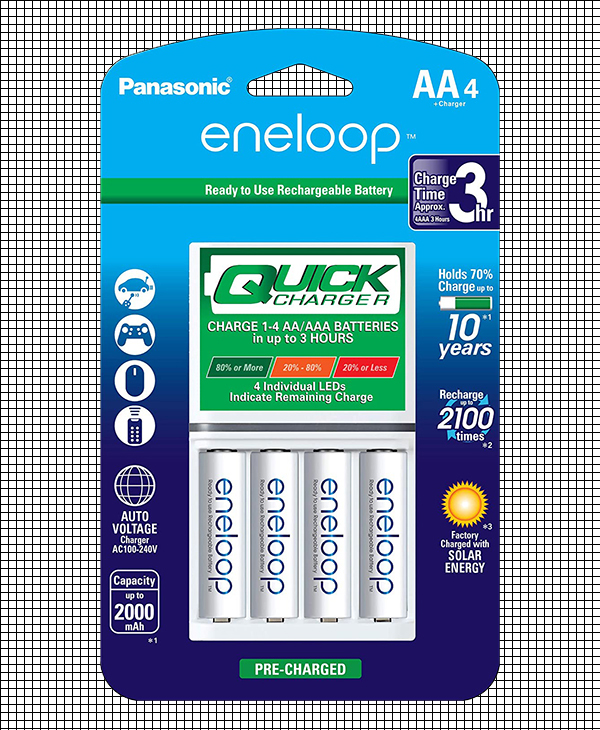
5. Rechargeable Batteries and Charger
Double -A and triple-A batteries are necessary for small flashlights, lanterns, large headlamps and the all-important NOAA Weather Radio. Also, I recommend you keep a Mini Maglite (less than $9 at Amazon) on your night table.

To keep your AA and AAA devices fully powered at all times, order a set of Panasonic Eneloop batteries. Panasonic Eneloop batteries are fully charged at the factory (using feel-good-about-it solar energy) before they’re shipped and are still ready for use after 10 years in storage (in fact, after 10 years they retain up to 70% of their original power). And if that’s not enough, Eneloop can be recharged more times that conventional battery chemistry (up to 2100 times).
Cost a bit more? I’m not so sure about that. You can buy 4 AA-size cells, 2000mAh capacity with a 3-hour fast charger for $25. This fast charger juices up 4-AA or 4-AAA Eneloop cells in about 3 hours, two cells in two hours. LEDs indicate charge level (very handy) and for safety the unit has battery detection technology and automatic shutoff. Available from Amazon for $25; might be the best investment in power that you’ve ever made.
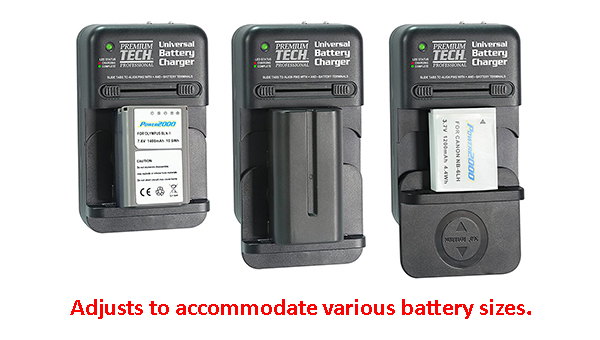
Cameras and some other devices that use Lithium Ion battery technology nearly always have their own dedicated charger. Misplace it and—well, we’ve all been there, no? Bet you didn’t know you can buy a talented Universal Li-Ion Charger for about $15.
Compatible with virtually all Li-Ion rechargeable batteries used in cameras and many other portable electronic devices, the Premium-Tech PT fits most battery shapes and sizes and is equipped with intelligent overcharge protection, automatic polarity detection and active LED charging indicators. Available from Amazon for $15. Great for travel, too.
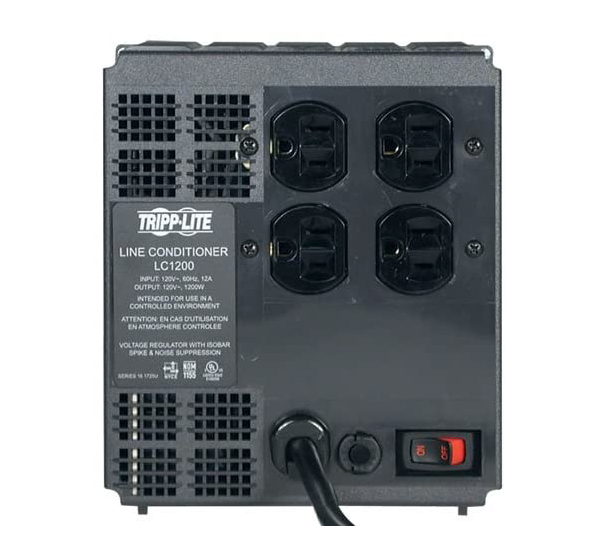
6. AC Power Line Conditioner
Some parts of the country suffer from moderate power fluctuations that can disrupt the proper operation of electronic devices. So-called “dirty power” is fraught with EMI (Electro Magnetic Interference), RFI (Radio Frequency Interference), waveform distortions and other types of external electrical noise. If you do color printing at home (the darkroom kind, not the inkjet kind) you may need a line conditioner. Or if you record live music. Most people, however, do not.
Tripp Lite LC1200 Line Conditioner with Automatic Voltage Regulator (AVR) and AC Surge Protection is a solid choice for typical home office use. Its advanced automatic voltage regulation corrects brownouts and over-voltages (specifically, corrects under-voltages as low as 87V and over-voltages up to 147V). Ideal for computers, routers, modems, printers, televisions and some other small devices. Has a 1200W power capacity and 1200 joule surge protection rating. It’s fitted with a 7-foot cord and provides 4 AC outlets. Available from Amazon for $117.
If you want to protect a home theater, media room or high-end audiophile equipment, do the smarter thing and contact a smart home integrator. You can find an integrator who is a member of CEDIA at this website. CEDIA stands for Custom Electronic Design and Installation Association. They are the real deal and have been for decades.

7. Home Standby Electric Generator
There are far too many variables to make a sensible recommendation other than this: Generac, one of the most prominent names in standby generators, has a quick online facilitator that will help you figure out exactly what you need for where you live, size of your domicile, etc.
Once installed, a natural-gas-powered standby generator can be configured to turn on automatically when the power goes out, so your furnace, refrigerator and other devices remain powered. You still need protection from lightning, but at least you won’t have to worry about losing electricity and the aggravation that brings.
 Conclusion
Conclusion
I hope that you found enough information here to make good decisions about preparing for weather-related emergencies. Don’t wait until the lights go out to look for the flashlight. And remember to check the National Weather Service (NOAA) for online weather forecasts and warnings.
—Jon Sienkiewicz
(As an Amazon Associate, Shutterbug earns from qualifying purchases linked in this story.)




